The term wainscoting refers to wooden panels that are typically located on the lower section of walls.
Wainscoting is a decorative and functional system of wood panels applied to the lower portion of interior walls, especially in the dining room, living room, or entryway.
For many years wainscoting has been installed to protect walls from chair or table damage, footwear marks, and other damaging elements.
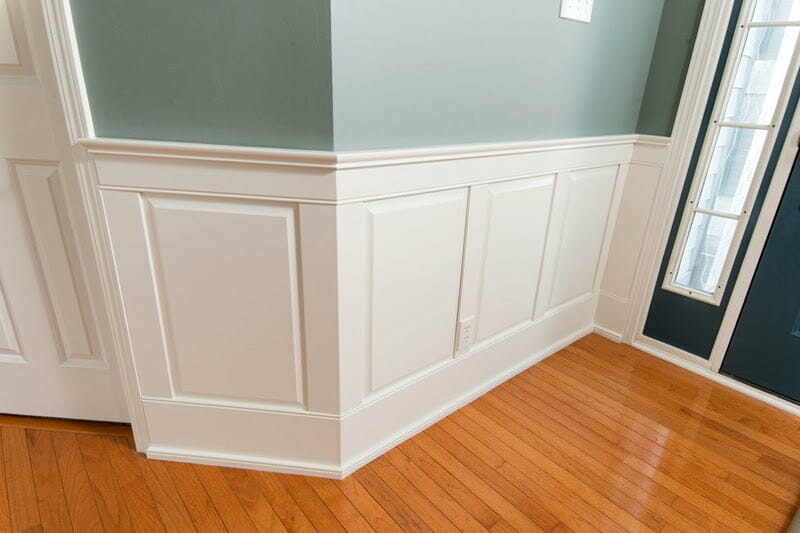
What Is Wainscoting?
Wainscoting is a decorative paneling that covers half of a wall with one type of paneling and leaves the rest of the wall as plaster or drywall. Usually, high-quality wood is added from the floor to midway up the wall.
If you want to create a narrow shelf around the edge of the room, add a three to six-inch lip to the top of the wood paneling. A combination of wood wainscot and brick wall is very popular.

Parts of Wainscoting?
Depending on the complexity of the style, the wainscoting can have additional parts, but in general, all styles will have the following parts:
- Top Cap
- Upper Rail
- Stiles
- Bottom Cap
- Lower Rail
- Shoe
Additional parts can be added in the center where you can have a flat panel, raised panel, beadboard panel, shiplap boards, and overlays.
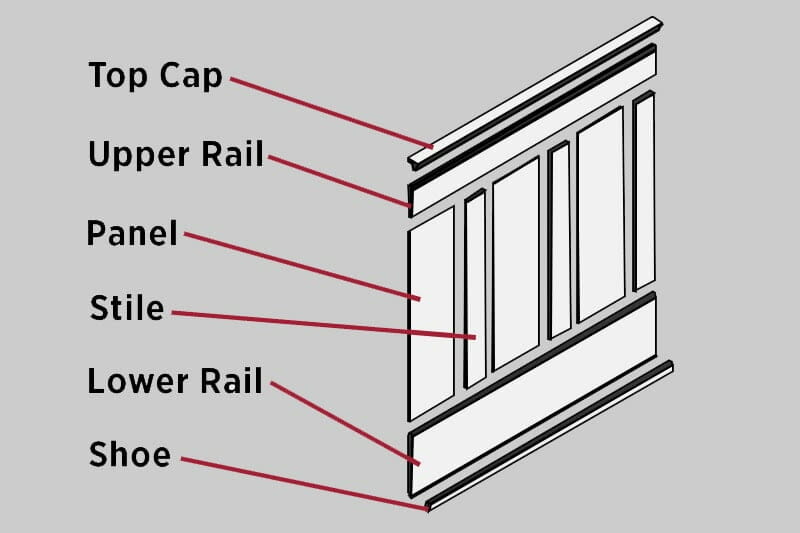
What is The Purpose of Wainscoting?
Wainscoting can be practical, and decorative at the same time while serving the following purposes.
Insulation
Homes in areas that experience extreme weather, especially cold weather, are in a need of adequate protection against these temperatures. By adding wainscoting to the walls, you will reinforce the cold plaster and provide another layer of insulation against significantly hot and cold temperatures.
Walls Protection
When placed along the lower wall, wainscoting helps protect the walls from the “scars” from everyday use. Chair or other furniture bumps are the most common.
Home Decor
According to some designers, wainscoting panels are recommended to add visual interest to walls. Raised panel wainscoting is available for homeowners who want a room with a formal, traditional feel. On the other hand, for those who prefer the minimalistic design, flat panel wainscoting is available as an option.
Popular Styles of Wainscoting
Many different styles of wainscoting are available, and the right one for your project will depend on the age and style of your house, where do you want to use it and of course the effect you are trying to achieve.
Overlay Wainscoting
This style is a combination of both flat panel and raised panel styles of wainscoting, which will be explained below in this article. Flat panels are first installed, and afterward, additional panels are centered on them. These additional panels can also be lined with molding.
For this wainscoting style, you can also just mount a flat wood panel with shaped edges directly on the drywall itself. Overlay wainscoting mimics the true solid wood raised panels and is associated with neoclassical design.
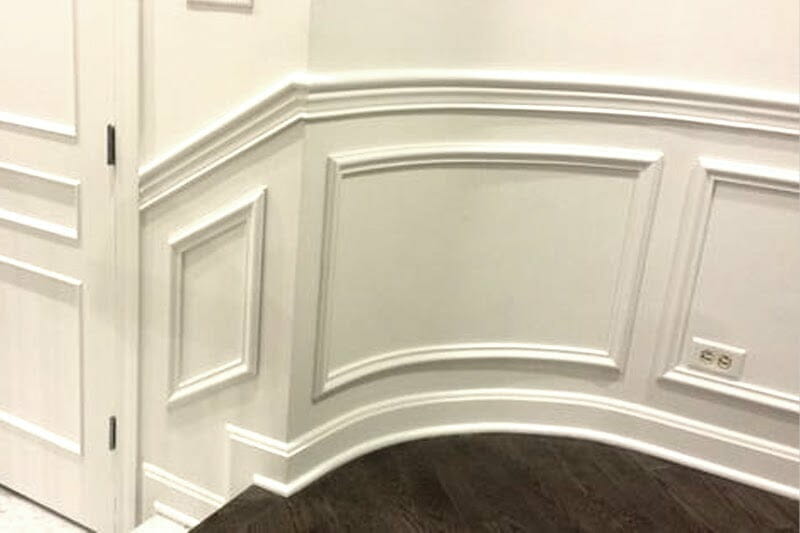
Beadboard Wainscoting
Long and continuous vertical grooves, and raised beads that are spaced about every inch or two inches apart, characterize this style. Beadboard wainscoting is made of thin, individual boards that are placed directly next to each other. These small boards are interlocked with their neighboring board using a tongue and groove system.
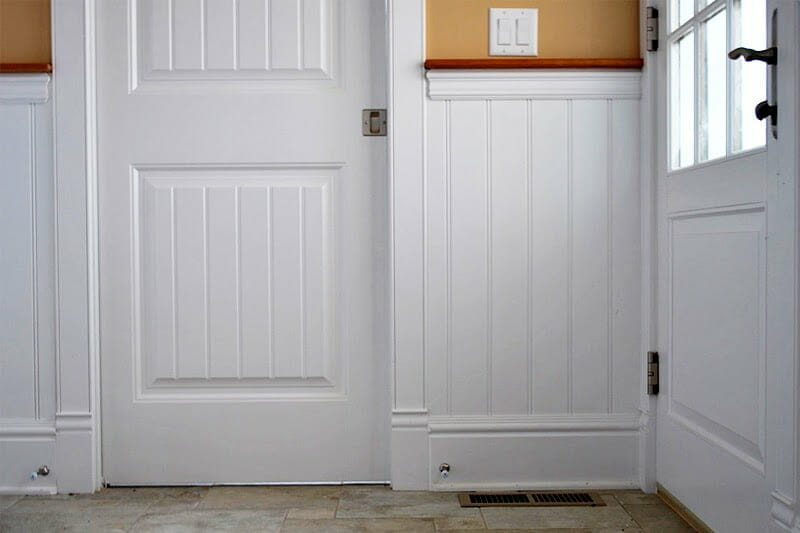
Board & Batten Wainscoting
Board and batten is a flat panel type of wainscoting with vertical boards that are used to cover the seams. Distinct in its style due to its regular pattern of wide vertical molding boards which are known as battens. These battens are usually 4 to 6 inches wide and are placed about 6 to 10 inches apart from each other.
Board & Batten wainscoting has a very stark look and was very popular in 20th-century homes. Recently board and batten wainscoting has seen a surge in its use in interior design due to its clean lines and seamless appearance, which works perfectly in contemporary homes.
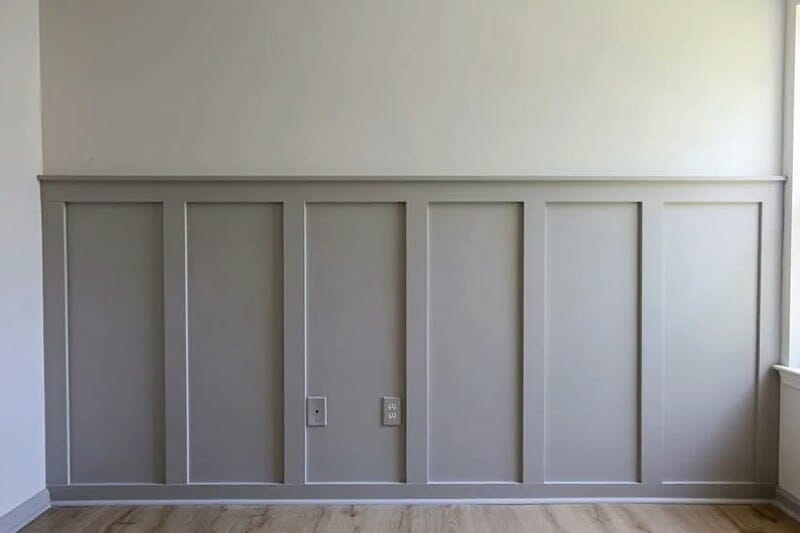
Raised Panel Wainscoting
Raised panel wainscoting has its roots in the 17th-century as a way to insulate homes. This is the most common and the oldest style of all and is often seen in colonial-type homes and is mostly used in the formal dining and living rooms.
Raised panel wainscoting is distinguished by the panels being placed in the front of the stiles and rails. The finished look results in panels that look raised off of the wall.
Flat Panel Wainscoting
This type features panels that are placed behind the stiles and rails. For a more contemporary look, this type of wainscoting uses boards with no beveled edges or molding, which causes them to look deeper than the stiles and rails.
Flat wainscot paneling is completely smooth on the front and does not have any grooves, beads, or bevels the only stylistic feature of flat paneling would be the seams between each board. These seams can sometimes be left open or can be covered with strips of wood or metal.
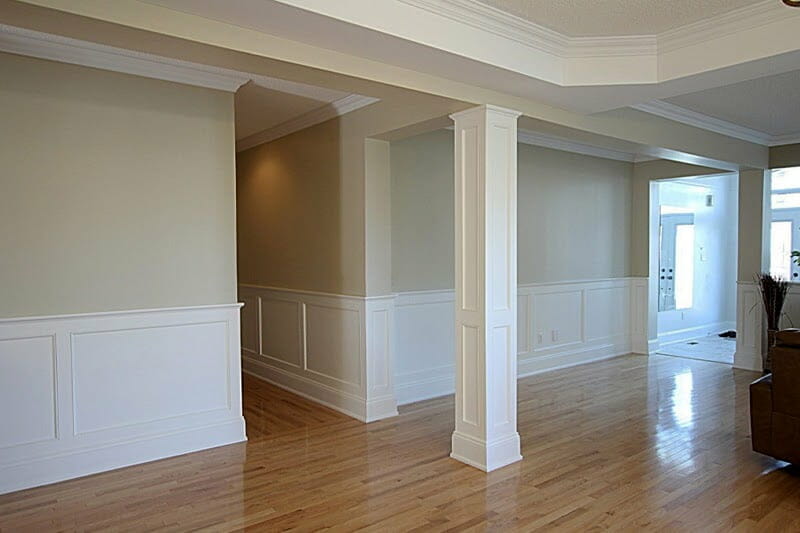
How Is Wainscoting Constructed?
Wainscoting can be both factory or handmade. When creating wainscoting by hand, you attach wood panels to the wall using a chair rail as the top border, a narrow strip of wood called stiles to vertically separate the panels and a baseboard as the bottom border. This results in traditional wall paneling consisting of a wall overlay of solid boards. Today, factories and subcontractors make wainscoting from a variety of materials, including plywood, plastic, PVC, or medium-density fiberboard MDF.
Pros of Wainscoting
This type of decorative wall paneling provides several benefits. Here they are:
Room Design Improvement
Installing wainscoting is a great way to improve and elevate the design of the room. It doesn’t take up available floor space. And, because it sits on the lower part of a wall, it doesn’t take up valuable wall space either.
Wainscoting Is Versatile
Not only that this wall covering is beautiful and elegant, but it is also versatile. It can fit into just about any style because it is available in any design or repeated pattern that will come to your mind. Wainscoting is available in a variety of materials and can vary the height to fit the look you are trying to get.
It Can be Incorporated in Any Room
Versatility and wide material range make wainscoting applicable in any room. This versatile trim is popular in dining rooms, living rooms, home offices, kitchens, bathrooms, etc.
Cons of Wainscoting
Along with the benefits comes and drawbacks. Here are some of them:
Differences in the Cost
There is no doubt is a great investment to add wainscoting to the design of your home. But it will also add a lot of costs depending on what you want. Differences are present due to the variety of materials, types of panels, and similar. Also, the size of the room, the height designer for it, the local market, can all affect the overall cost.
Skilled Installers Required
Although it can be a DIY project, it can be hard to get right. You need very precise measurements, skill with a chop saw, and the know-how to install it well.
It Can Look Too Formal or Outdated
This decorative wall paneling is popular with many options but you could end up with trim that looks outdated or creates a look that is too formal in a room. An experienced home designer can help you avoid this kind of situation.







